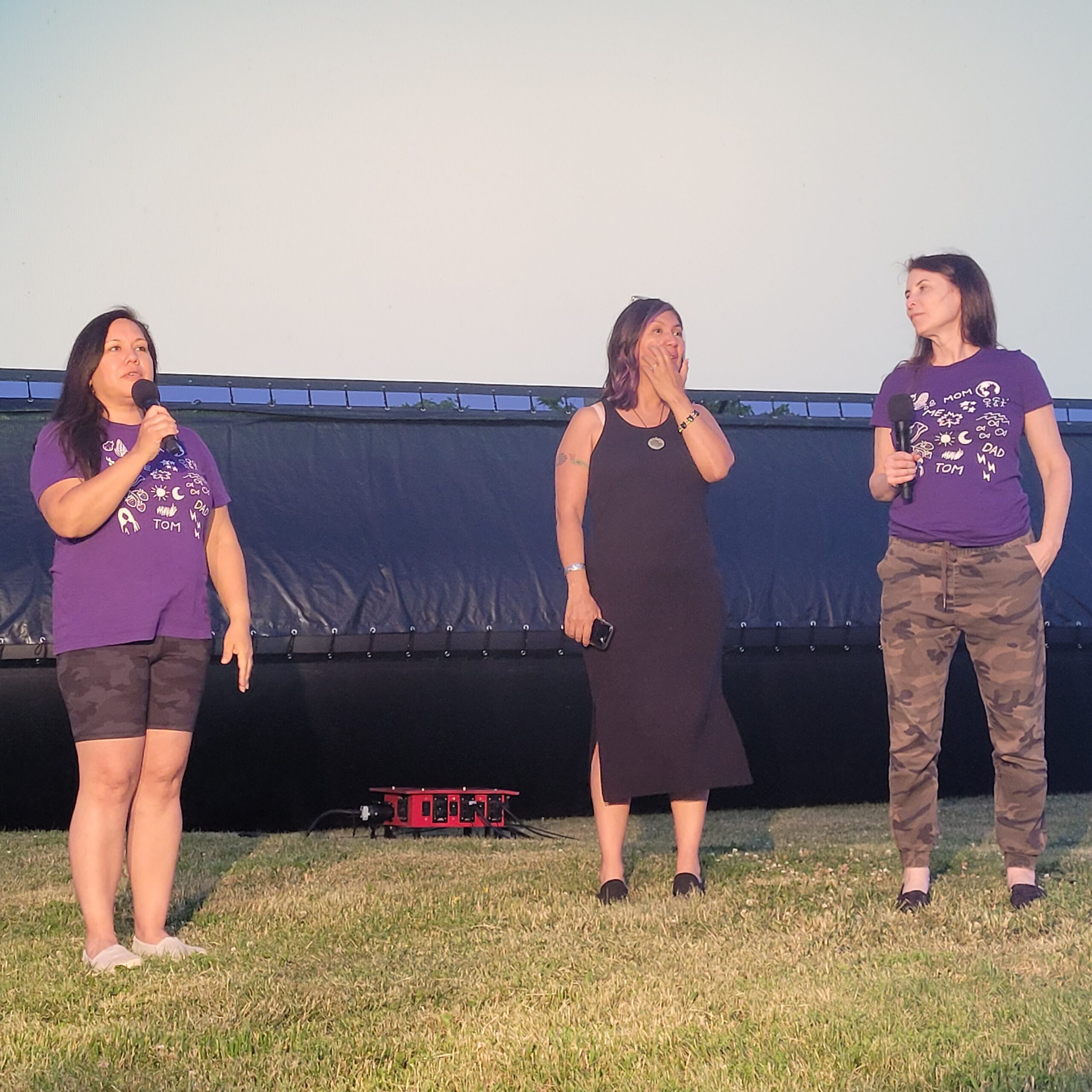
Indigenous people are becoming more and more represented in the film industry and with the recent success of the mainstream feature film Run Woman Run, most of which was shot on Six Nations, Indigenous people are being encouraged to get involved with filmmaking.
Zoe Hopkins, director of the surprise dramedy Run Woman Run, told a Six Nations audience at a live outdoor screening of the movie last week that Onkwehonwe people are taking their place in the film industry.
Hopkins, a Helitsuk/Mohawk writer and director, fell in love with filmmaking when she was 15 and hasn’t looked back.
“I was really excited about the whole machine of making films and I knew I wanted to do something in the film industry and I wasn’t quite sure what yet.”
She got a degree in filmmaking at Ryerson University right after high school and had worked as an actor before and after her degree was completed.
She immediately started making short films when she graduated and made her first feature film in 2018, called Kayak to Klemtu.
Hopkins said almost any skill set can enable someone to work in film.
“I’ve always been really amazed at how there’s a job for all different kinds of people in the film industry, no matter what your skills are, whether you’re creative or mathematical or technical, there’s all kinds of different jobs, from accountants and construction, costumes, and makeup and camera, building things.”
She said, “Nowadays it’s really nice to go on a set and see it’s really equal with men and women on this particular show I’m working on. It’s really a mixed bag. There’s not a job that’s female specific or male specific so you can be anything you want in this film industry.”
And, she said, Ongwehonwe people are taking up space in the industry now, too, in higher up positions, like writing and directing.
“Being in the film industry is so great because I’ve been able to travel the world and go to film festivals and meet other Ongwehonwe people around the world.”
She worked alongside Carla Robinson and Paula Devonshire, who joined her to interact with the audience during a screening of the film on a large outdoor screen at The Gathering Place on Indigenous People’s Day June 21.
Robinson, a former CBC broadcaster who has also taught screenwriting, said, “Don’t think just because you’re older you can’t do it, too. All the experience that life has given you will help you. I really enjoyed working on Run Woman Run and seeing it take shape.”
In Run Woman Run, it kind of reflects Hopkins’s real-life experience of learning Mohawk, as the main character, Beck, also desires to learn her language.
“That’s taking back her power and it’s so amazing to bring our language into storytelling,” said Robinson. “Storytelling is magic. You get lost in that world and it’s so powerful.”
The film centers around a single mom named Beck who has a self-defeating attitude. After waking up from a diabetic coma, and after a visit from the ghost of legendary Onondaga long distance runner Tom Longboat, she embarks on a quest to train for a marathon, while learning many lessons along the way.
Longboat’s spirit accompanies her throughout her training.
Large portions of the movie are filmed on Six Nations.
Viewers are sure to be thrilled to see landmarks from their home territory on the big screen, as Beck runs around the lonely country roads on the reserve, and attempts to run a 10 km race with scenes shot at the Six Nations Community Hall.
The movie is expected to be available on Crave this year.








